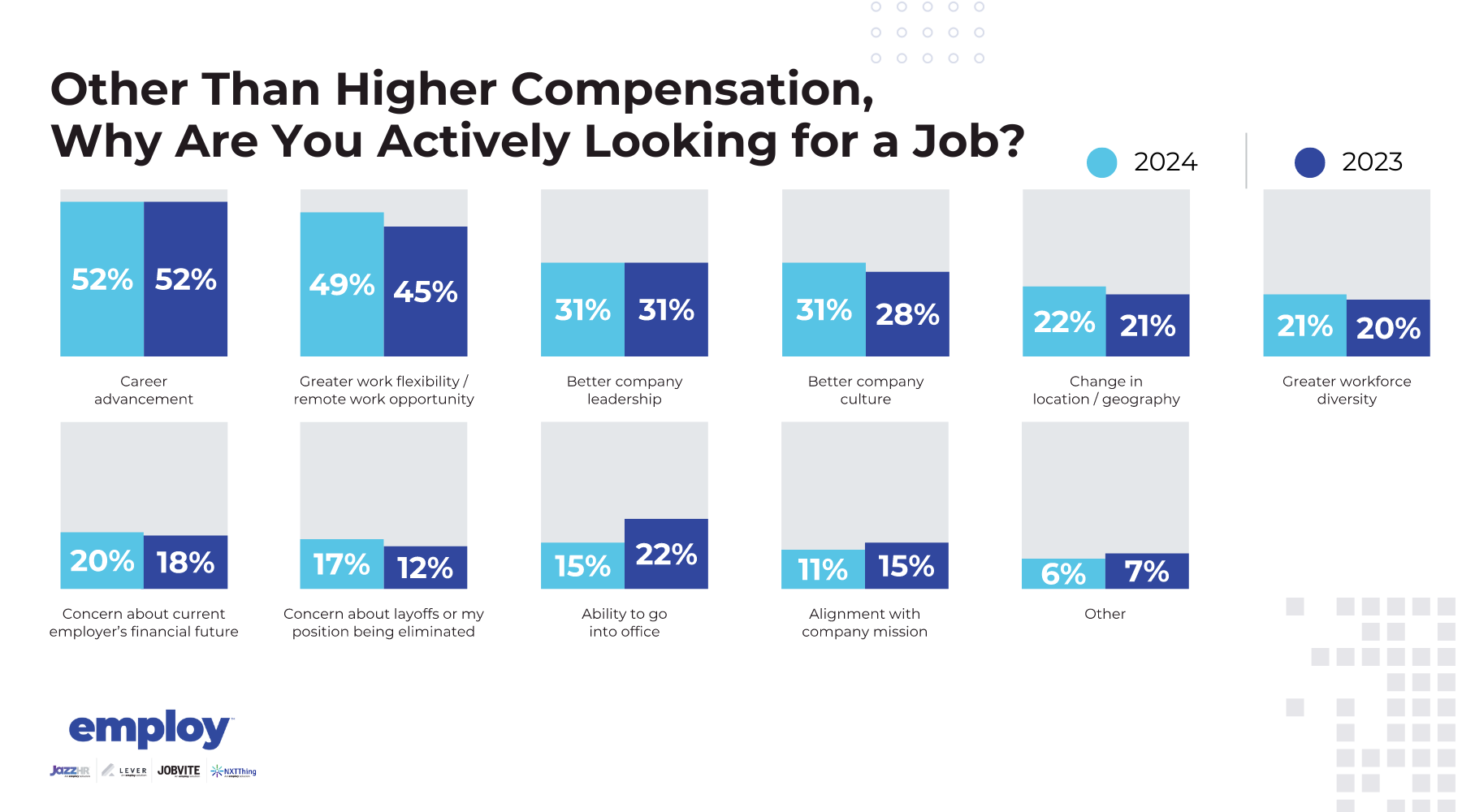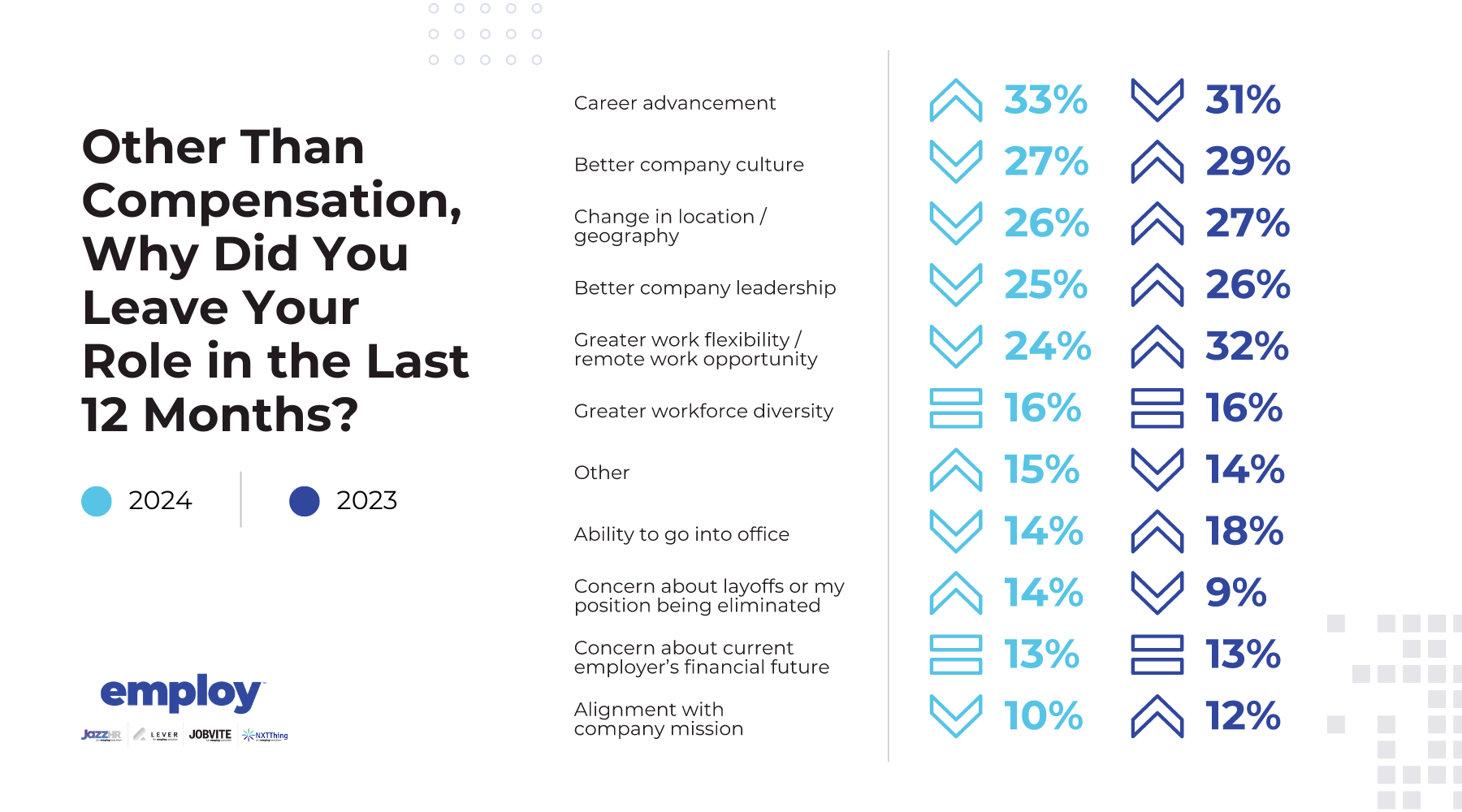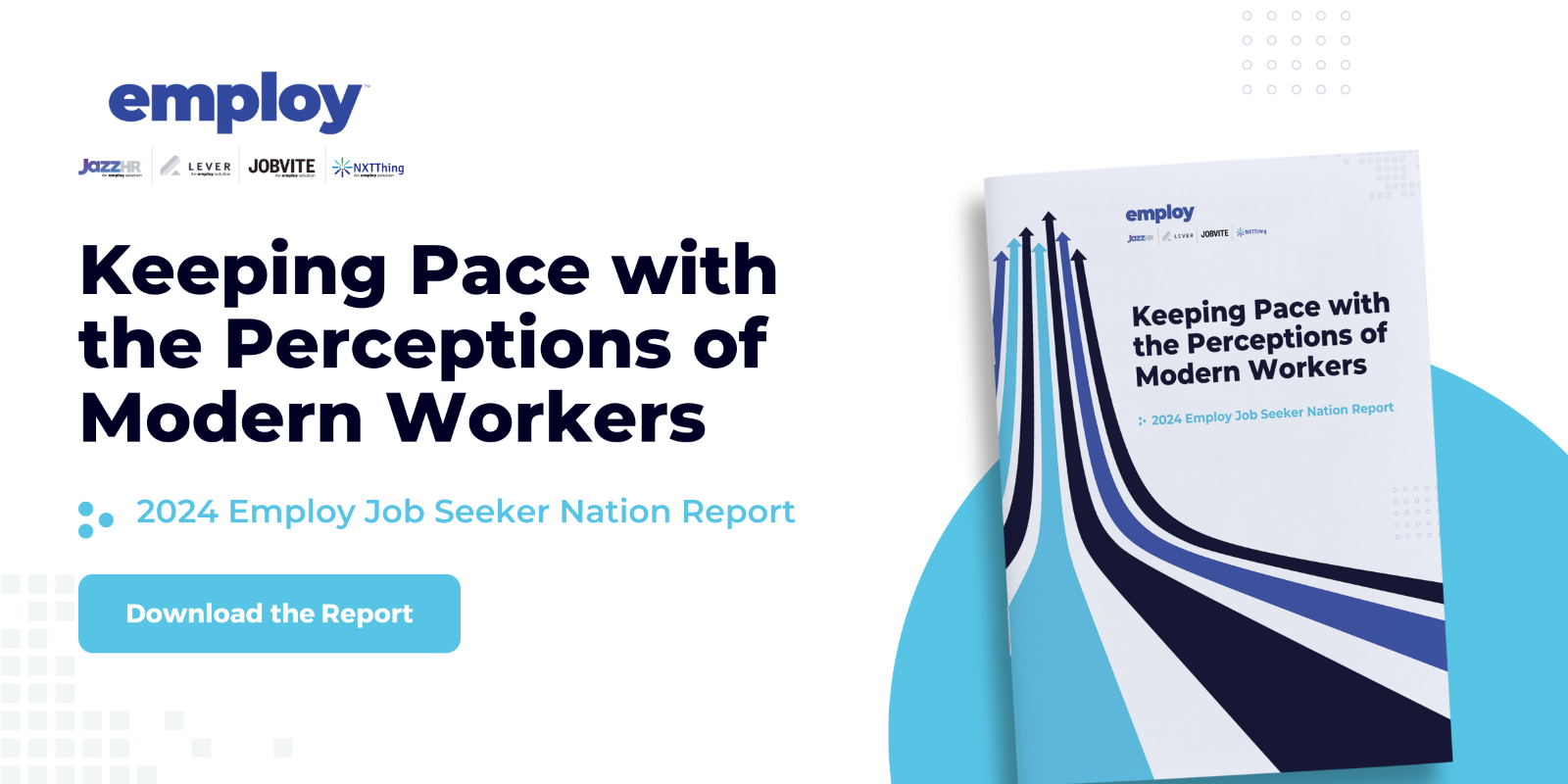Decoding Active and Passive Candidates Today
New data from Employ reveals that one in three workers would feel comfortable quitting their current job without having another role lined up. According to a survey of more than 1,500 U.S. workers conducted by Employ in April 2024, candidates are feeling confident in the current labor market.
And despite high levels of job satisfaction, 86% of workers are at least somewhat open to other job opportunities, including 46% who indicate they are very open. Companies should respond to these perceptions by focusing on areas within talent acquisition that can speed the hiring process, better nurture candidates, and reinforce worker priorities.
The 2024 Employ Job Seeker Nation Report dives into the motivations, mindset, and perceptions of both active and passive candidates. Let’s take a look at some of the findings captured in the report on both types of these job seekers.
Active Job Seekers
A significant percentage of U.S. workers are actively looking for a new job right now, with 4 in 10 workers indicating they are seeking new employment. But what motivates job seekers to look for new employment? Beyond compensation, active job seekers are primarily motivated by career advancement and greater work flexibility or remote work opportunities.

Employers should recognize that candidates are looking for opportunities to progress and to stay flexible in their approach to work. By emphasizing advancement and flexibility in recruitment messaging, companies can differentiate themselves to job seekers in the market.
Company culture and better company leadership also rank high in importance to candidates. Organizations must take an active role in managing their employer brand and ensuring they have strong leaders who can effectively lead the workforce.
When it comes to looking for new roles, 50% of active job seekers believe that finding a job in the current labor market is easy, and 56% believe that the current job market favors candidates. Nearly two-thirds believe it will take them less than three months to find a new job.
Passive Candidates
For the 52% of workers who are not actively looking for a job, 54% would consider applying for a new role if approached by a recruiter. Their top motivations for considering a new job include greater work flexibility or remote work opportunities (43%) and career advancement (42%).
Of these more passive candidates, 55% believe it would be easy to find a job in the current labor market, 49% indicate the current hiring environment favors candidates, and 73% believe it would take them less than three months to find a new job. However, despite these beliefs, only 18% of passive candidates would feel comfortable quitting their jobs without having another job lined up.
While there are distinct differences between those workers actively seeking a new job versus those who are not, there are also similarities. These commonalities point to shared motivations for seeking new positions and beliefs that the labor market still offers plenty of opportunities to find new roles quickly.
Between 2022 and 2023, more than one in five workers (22%) had left a job. During the past 12 months, this number dropped to just 17%. Workers indicate that beyond seeking increased compensation, they left their current position for career advancement (33%), better company culture (27%), change in location/geography (26%), better company leadership (25%), and greater work flexibility/remote work opportunity (24%).

Motivations for Leaving or Declining Jobs
Most alarming for employers, 24% of workers have left a job within the first 90 days of starting a new role. While this number has decreased by several percentage points over the last three years, it is still concerning that nearly one in four workers acknowledge leaving within three months of beginning a role.
The primary reasons for leaving within this three-month period include poor company culture (47%), disapproval/distrust of company leadership (31%), and limited career advancement (28%). It is essential for companies to ensure that the transition from new hire to new employee is seamless and that the experience promised as a candidate matches the experiences delivered as an employee.
When it comes to declining job offers during the last year, less than one-quarter (21%) of workers have turned down a new role. Contributing to their decision to refuse a new job are poor location or geography (38%), limited career advancement (33%), and limited flexibility to work from home or remotely (30%). While declining offers are limited to one in five candidates, it’s essential that talent teams continue to nurture candidates through the recruiting lifecycle from the first look to the first day.
Understanding the dynamics of today’s job seekers in the labor market is crucial for both recruiters and employers alike. The Employ Job Seeker Nation Report provides a comprehensive look into the motivations, aspirations, and challenges faced by workers in the U.S.
Stay ahead of the curve, understand market trends, and make informed decisions to cultivate a thriving workforce in the ever-evolving job market. Download the Employ Job Seeker Nation Report now to unlock more insights on job seekers today and elevate your hiring function to new heights.
The post Decoding Active and Passive Candidates Today first appeared on Jobvite.

